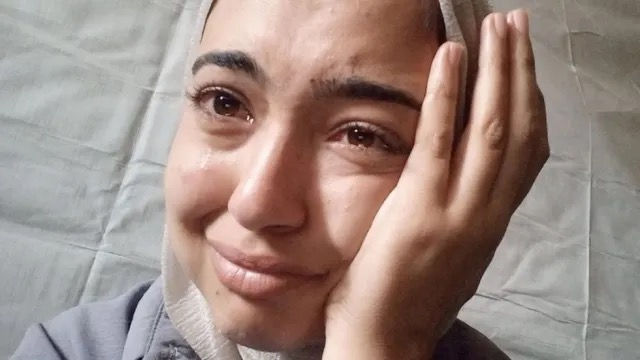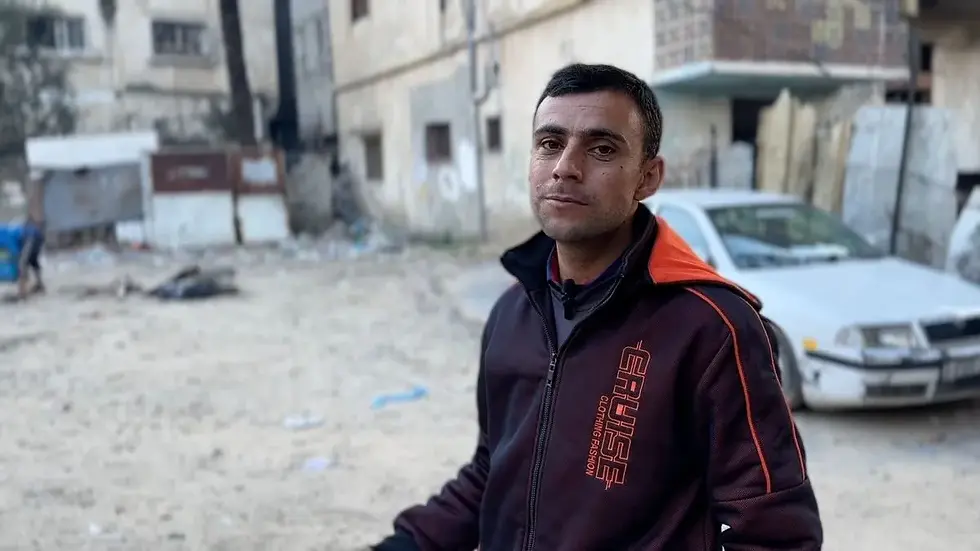Filmed by ordinary Gazan citizens, this Storyville documentary tells a tale of extraordinary human resilience

Aya, a 23-year-old law graduate, crying after learning that her house has been destroyed (Photo: BBC)
Life and Death in Gaza is a harrowing and emotionally charged documentary that provides a vivid, intimate look at the devastating human cost of conflict in the Gaza Strip. Through the lens of ordinary Palestinians, it captures the brutal reality of life under siege and the daily struggle for survival amidst relentless violence.

Khalid on the street near his home in Jabalia, northern Gaza (Photo: BBC)
The film primarily follows the experiences of children, doctors, and civilians who are trapped in an unending cycle of violence. The most striking element of the documentary is its raw depiction of the medical crises faced by hospitals in Gaza, where overburdened healthcare workers fight to save lives with minimal resources. The scenes inside these medical facilities are nothing short of heart-wrenching, as doctors struggle to treat critically injured patients, often children, with insufficient supplies and under constant threat from bombings.
Beyond the physical destruction, the film delves into the psychological trauma experienced by Gaza’s residents. Children, who should be growing up in an environment of safety and education, instead live with the constant fear of death and destruction. The film emphasizes how this perpetual state of war shapes the minds and futures of the younger generation, leaving deep emotional scars.

Hammoud, Khalid’s youngest son, near their home in Jabalia (Photo: BBC)
One of the most striking and disturbing moments in Life and Death in Gaza is witnessing children pretending to be injured or killed. This chilling act reveals just how deeply the ongoing violence has seeped into their lives, distorting the boundaries between play and reality. For most children, playtime is a carefree escape, but in Gaza, even their games are shaped by the ever-present shadow of war.
The sight of children lying on the ground, mimicking the aftermath of bombings, is haunting. It’s a stark reminder that they are not only witnesses to the conflict but also internalizing it. What should be innocent play becomes a morbid reenactment of the trauma they see around them every day. This behavior highlights the psychological toll of living in such a volatile environment, where violence is normalized and even childhood games are infused with the horrors of war.
The shock comes not only from seeing children mimic injury and death but from realizing that this is their lived experience. Their world is one where bombings and destruction are a part of daily life, so much so that it becomes woven into how they process and understand the world around them. Instead of playing games of imagination or innocence, they are playing war. This unsettling reality reveals the depth of their trauma and the loss of a normal childhood, replaced by a harsh, unforgiving environment that no child should have to endure.
It’s a moment that forces viewers to confront the devastating psychological impact of war on the most vulnerable—children. This shocking behavior is a cry for help, illustrating that while physical wounds may heal, the emotional scars run deep, shaping how these children view life and death from an unimaginably young age.
One of the strengths of Life and Death in Gaza is its focus on personal stories. These intimate narratives humanize a conflict that is often reduced to statistics and news reports. We meet individuals who have lost loved ones, homes, and entire communities, and yet somehow, they persist. Their resilience is both inspiring and tragic, as the film reminds us that even in the face of such horror, life goes on—but at a terrible cost.
Visually, the documentary is unflinching. The cinematography does not shy away from the gruesome aftermath of airstrikes or the bloodied bodies rushed into overwhelmed emergency rooms. The camera work brings the viewer face-to-face with the devastation, creating an immersive experience that is difficult to watch, but impossible to turn away from.
However, the film’s relentless focus on suffering can also feel overwhelming. While this may be a deliberate choice to emphasize the sheer scale of the crisis, some viewers may find the documentary emotionally exhausting. There is little in the way of hope or resolution, which mirrors the reality of life in Gaza but can leave viewers feeling helpless by the end.
Overall, Life and Death in Gaza is a powerful, gut-wrenching account of the human cost of war. It forces viewers to confront the harsh realities faced by those living in one of the world’s most troubled regions. While it may not provide solutions, it succeeds in making the suffering deeply personal, ensuring that the people behind the headlines are not forgotten. It is an essential watch for anyone seeking to understand the true impact of conflict on the human spirit.
A Little Thought:
The call for world leaders to condemn Israel for the ongoing brutality and destruction towards civilians in Gaza is rooted in a growing global demand for accountability and justice. The scale of violence, particularly during heightened periods of conflict, has led to significant loss of life, especially among civilians, including women and children. The images of bombed-out homes, hospitals, and schools have sparked outrage, with many questioning the proportionality of Israel’s military responses and the ethics of such warfare in densely populated areas.
Condemnation is necessary not only as a moral stance but also as a push for a reevaluation of policies that contribute to the suffering of civilians. The destruction of critical infrastructure, such as hospitals and water supplies, exacerbates the humanitarian crisis, leaving civilians trapped in conditions that violate international human rights standards. While Israel has often defended its actions as necessary for security, the level of devastation inflicted on Gaza’s civilian population has led to accusations of collective punishment, which is prohibited under international law.
For world leaders to remain silent or neutral in the face of such suffering sends a troubling message—that the rights of civilians in Gaza are secondary to geopolitical interests. A clear and unified condemnation of Israel’s actions would not only signal solidarity with the victims of this conflict but also apply pressure on all parties involved to seek peaceful and just solutions. It is crucial for international bodies, such as the United Nations, to step up and ensure that human rights are prioritized over military objectives.
World leaders have a responsibility to uphold international law and protect civilian lives, regardless of political alliances. By condemning the excessive use of force, they would affirm the importance of accountability in conflict and contribute to the broader goal of peace and justice in the region. Failing to do so only perpetuates a cycle of violence and deepens the suffering of Gaza’s population.
‘Life and Death in Gaza’ is streaming on BBC iPlayer

Comments